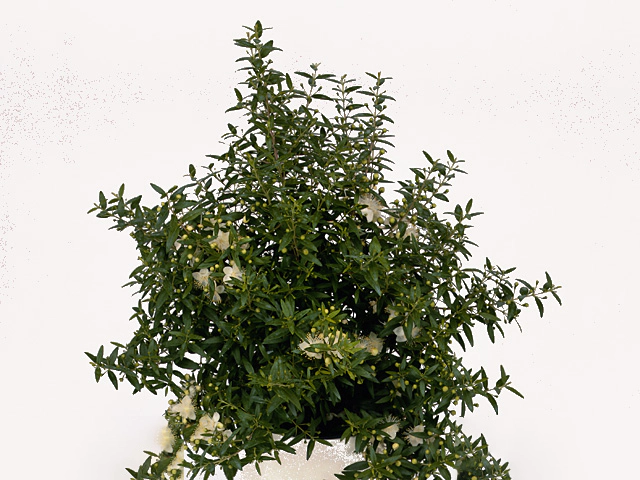Myrtus communis

Myrtus communis, commonly known as myrtle, is a small evergreen shrub that belongs to the Myrtaceae family. Native to the Mediterranean region, myrtle has been cultivated for centuries due to its attractive foliage and aromatic properties. This article will explore the uses, cultivation, and benefits of Myrtus communis, or myrtle.
One of the main uses of myrtle is in the culinary world. Both the leaves and berries of the shrub are used as flavoring ingredients in various dishes. In Mediterranean cuisine, myrtle leaves are often used to add a peppery, herbal flavor to salads, stews, and marinades. The berries, on the other hand, are used to make liquors, such as the famous Italian liqueur called Mirto.
Apart from its culinary uses, myrtle also has a significant place in traditional herbal medicine. The shrub's leaves and essential oil are known for their antiseptic, astringent, and expectorant properties. Myrtle has been used in the treatment of respiratory conditions, such as coughs, bronchitis, and asthma. Its essential oil is also used topically to promote skin health and improve the appearance of acne-prone or aging skin.
In terms of cultivation, myrtle is a relatively low-maintenance shrub that thrives in well-draining soil and full sun. It can tolerate a wide range of soil conditions and is resistant to drought once established. Myrtle is often used as a hedge or border plant due to its dense, bushy growth habit. Its glossy, dark green leaves, fragrant white flowers, and purple-black berries also make it an attractive addition to any garden.
Moreover, myrtle has symbolic and cultural significance in many regions. In ancient Greek and Roman civilizations, it was associated with love, beauty, and immortality. The plant was often used in bridal bouquets and wreaths to symbolize fidelity and lasting love. In Jewish tradition, myrtle branches are part of the Four Species used during the festival of Sukkot, representing different elements of nature.
Furthermore, myrtle has gained attention for its ecological benefits. The shrub provides habitat and food for various birds, bees, and butterflies. It also has air purifying properties, absorbing pollutants such as carbon dioxide and releasing oxygen into the surrounding environment.
In conclusion, Myrtus communis, or myrtle, is a versatile and valuable plant. Its culinary uses, medicinal properties, cultural significance, and ecological benefits make it a popular choice for gardeners and enthusiasts. Whether used in the kitchen, medicine cabinet, or landscape, myrtle continues to charm and captivate people with its unique characteristics.
Market availability index by month:
| Jan. | Feb. | Mar. | Apr. | May | Jun. | Jul. | Aug. | Sep. | Oct. | Nov. | Dec. |
|---|---|---|---|---|---|---|---|---|---|---|---|
| 1 | 2 | 3 | 3 | 4 | 1 | 3 | 1 | 1 | 1 | 1 | 1 |